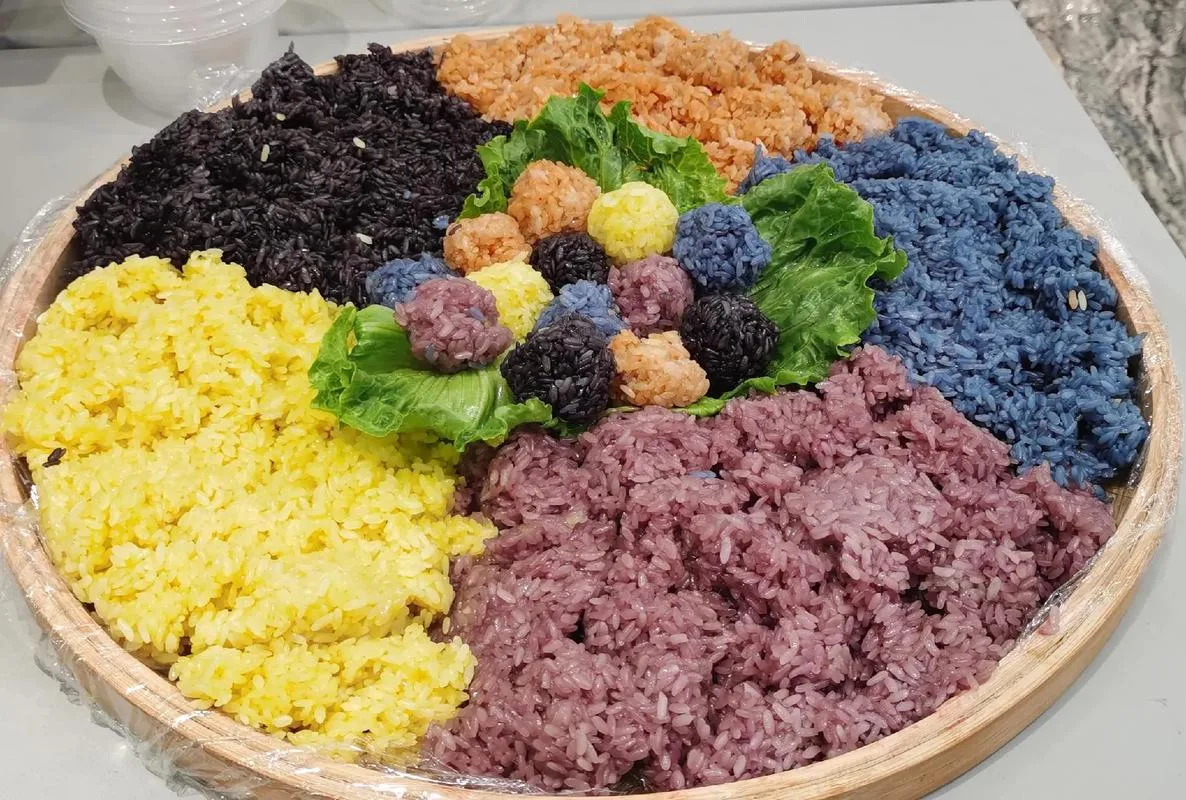Wu Se Nuo Mi迷的鲜明喜悦: 通往广西心脏的烹饪之旅
As a food connoisseur and practitioner deeply rooted in the rich culinary traditions of China, I am thrilled to introduce you to a unique and vibrant dish that is not only a feast for the taste buds but also a celebration of culture and tradition. This dish is none other than the Wu Se Nuo Mi Fan, or Five-Color Glutinous Rice, a delicacy originating from the Guangxi Zhuang Autonomous Region in the city of Nanning.
起源和文化背景:
The Wu Se Nuo Mi Fan is steeped in history and tradition, dating back to the Zhuang people’s Song Festival, also known as the “March 3rd Festival.” This festival is a time for the Zhuang community to honor their ancestors, celebrate life, and express their hopes for a prosperous year ahead. The five colors of the rice—red, 黄色的, green, white, and black—symbolize the five elements in Chinese philosophy: fire, earth, wood, metal, 和水. These colors also represent the five directions—east, south, west, north, and center—signifying completeness and the harmony of the universe.
成分和准备:
The making of Wu Se Nuo Mi Fan is an art form that requires the use of natural plant dyes to achieve the five distinct colors. The dyes are derived from the following plants:
– Red: Red yeast rice or the flowers of the Rosa chinensis
– Yellow: The heart of the golden needle plant or turmeric
– Green: Butterfly pea flower or Pandanus leaves
– White: Uncolored glutinous rice
– Black: The fruit of the Sappan wood tree or black rice
These dyes are carefully prepared and used to soak the glutinous rice overnight, allowing the colors to permeate the grains. The rice is then steamed to perfection, resulting in a dish that is not only visually stunning but also packed with a variety of flavors.
质地和外观:
The Wu Se Nuo Mi Fan is a sight to behold. Each grain of rice retains its distinct color, creating a mosaic of hues that sparkle with natural vibrancy. The texture is sticky and chewy, a characteristic of glutinous rice, which gives the dish its unique mouthfeel. The colors are so vivid that they seem to dance on the plate, making every serving a work of art.
代表性菜肴和烹饪用途:
While Wu Se Nuo Mi Fan can be enjoyed on its own as a staple dish, it is also used as an ingredient in various traditional Zhuang recipes. It can be incorporated into sweet or savory dishes, adding a pop of color and a hint of natural sweetness. Some popular dishes include:
– Zhuang-style sticky rice balls wrapped in bamboo leaves
– Mixed with other grains and served as a side dish
– Used as a filling for glutinous rice dumplings
烹饪特征:
The Wu Se Nuo Mi Fan is not just a dish; it is a symbol of good fortune and prosperity. Its five colors are believed to bring luck and positive energy to those who partake in this traditional feast. The natural dyes used in the preparation process also add a layer of health benefits, as many of the plants used have medicinal properties.
综上所述, the Wu Se Nuo Mi Fan is more than just a culinary delight; it is a cultural treasure that connects the people of Guangxi to their roots and to each other. It is a dish that speaks volumes about the region’s history, its people’s values, and their love for life and celebration. 作为食品从业者, I encourage you to experience this vibrant dish, not only for its taste but for the story it tells and the joy it brings.
